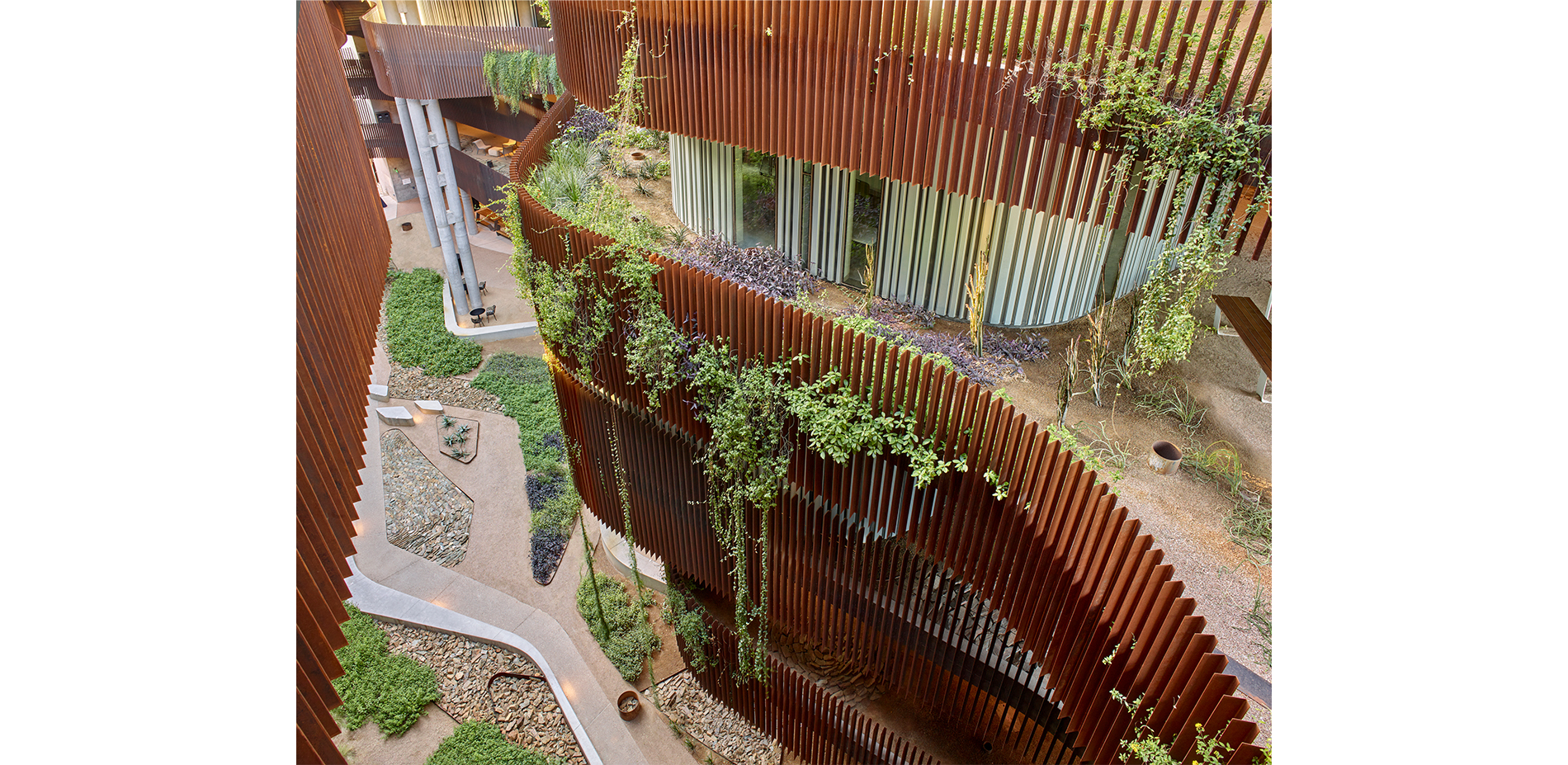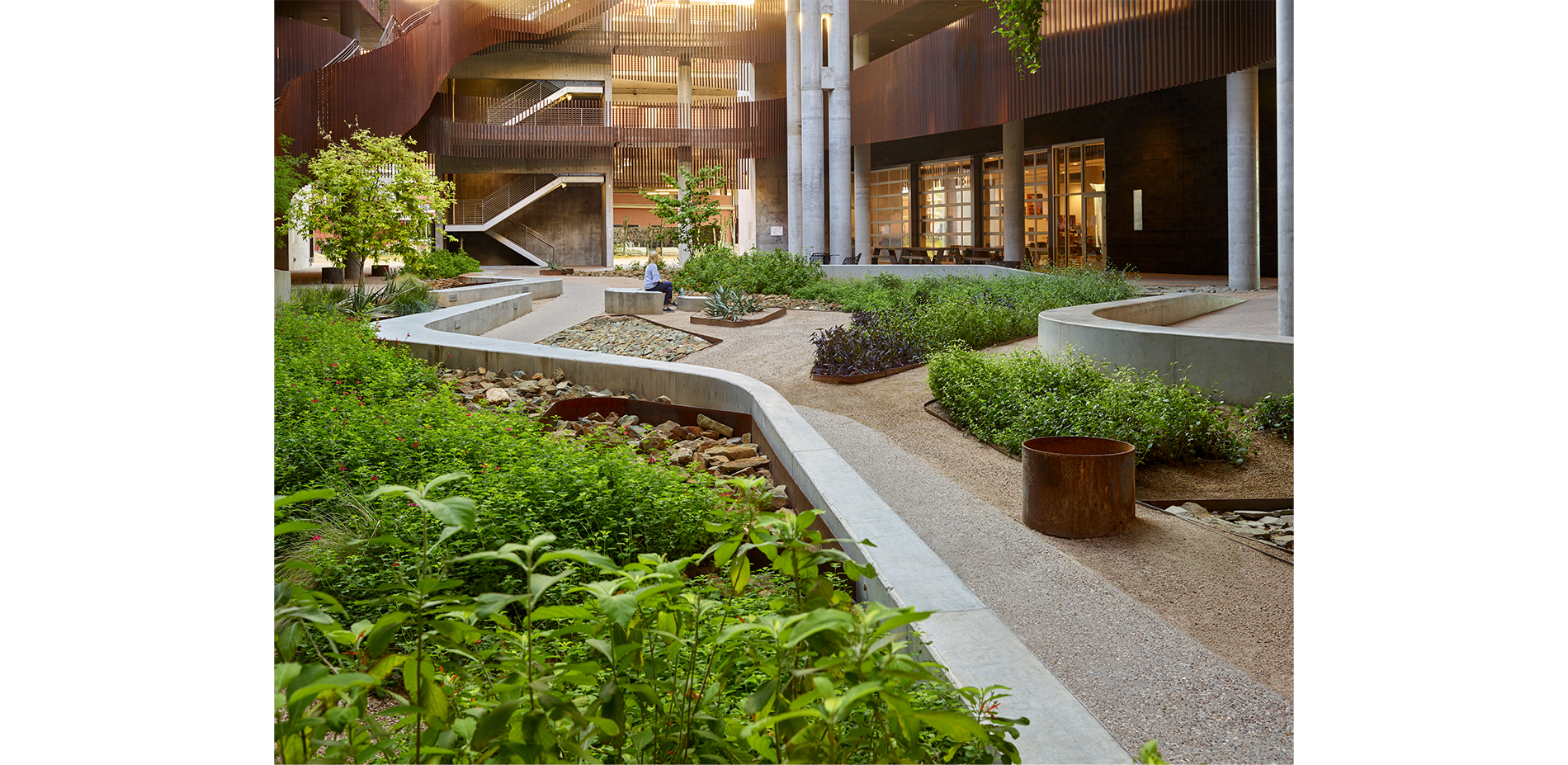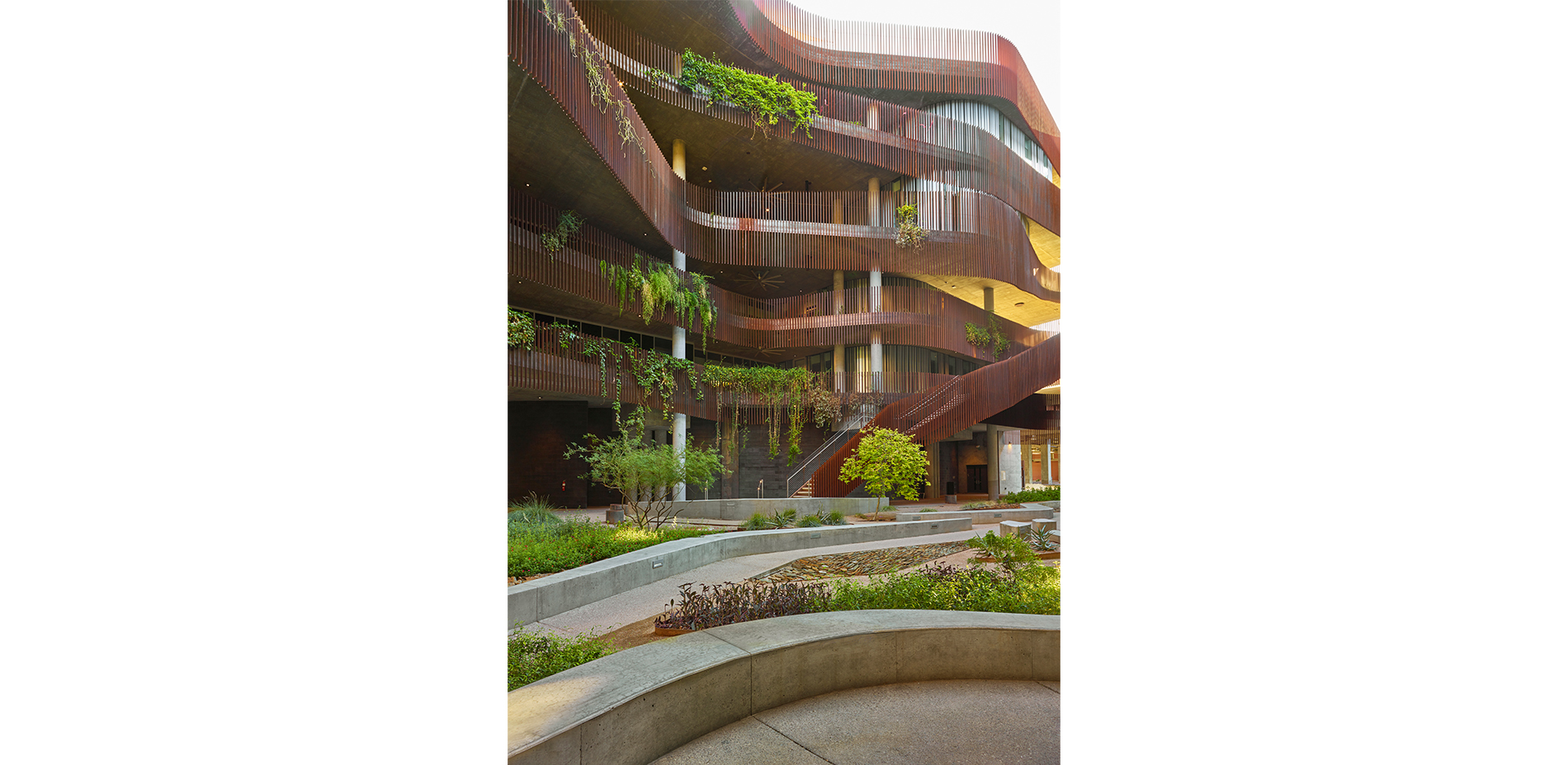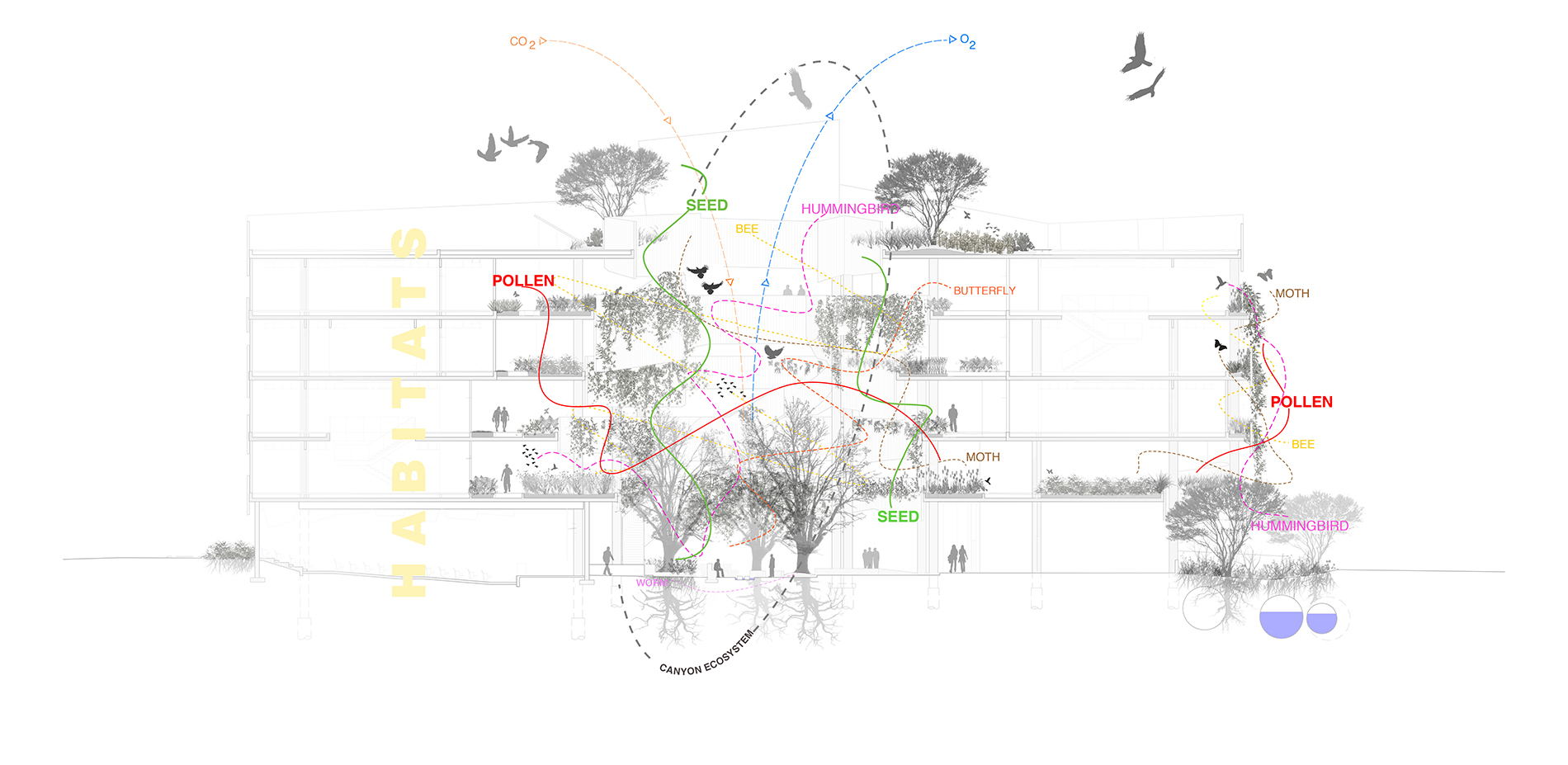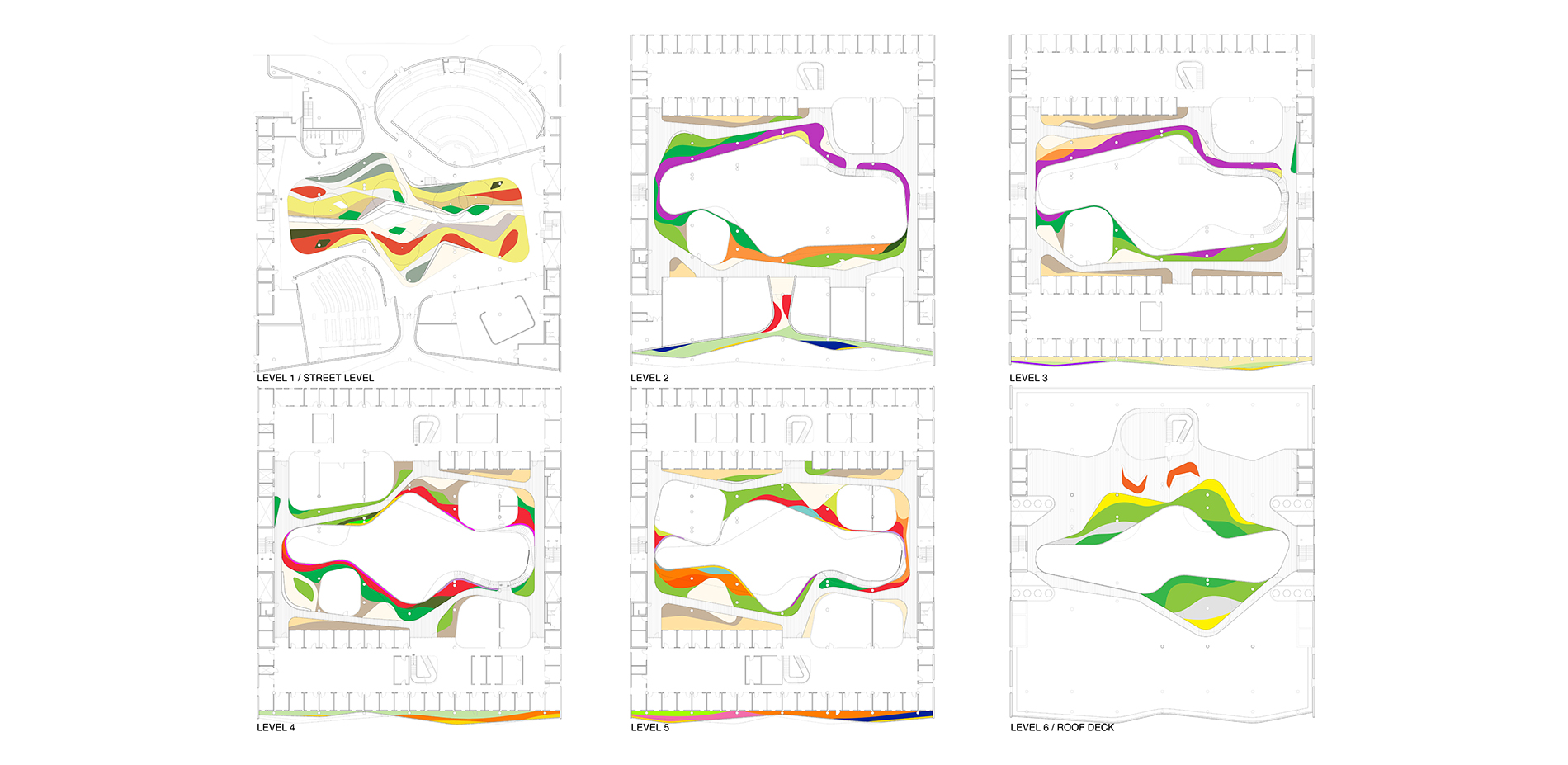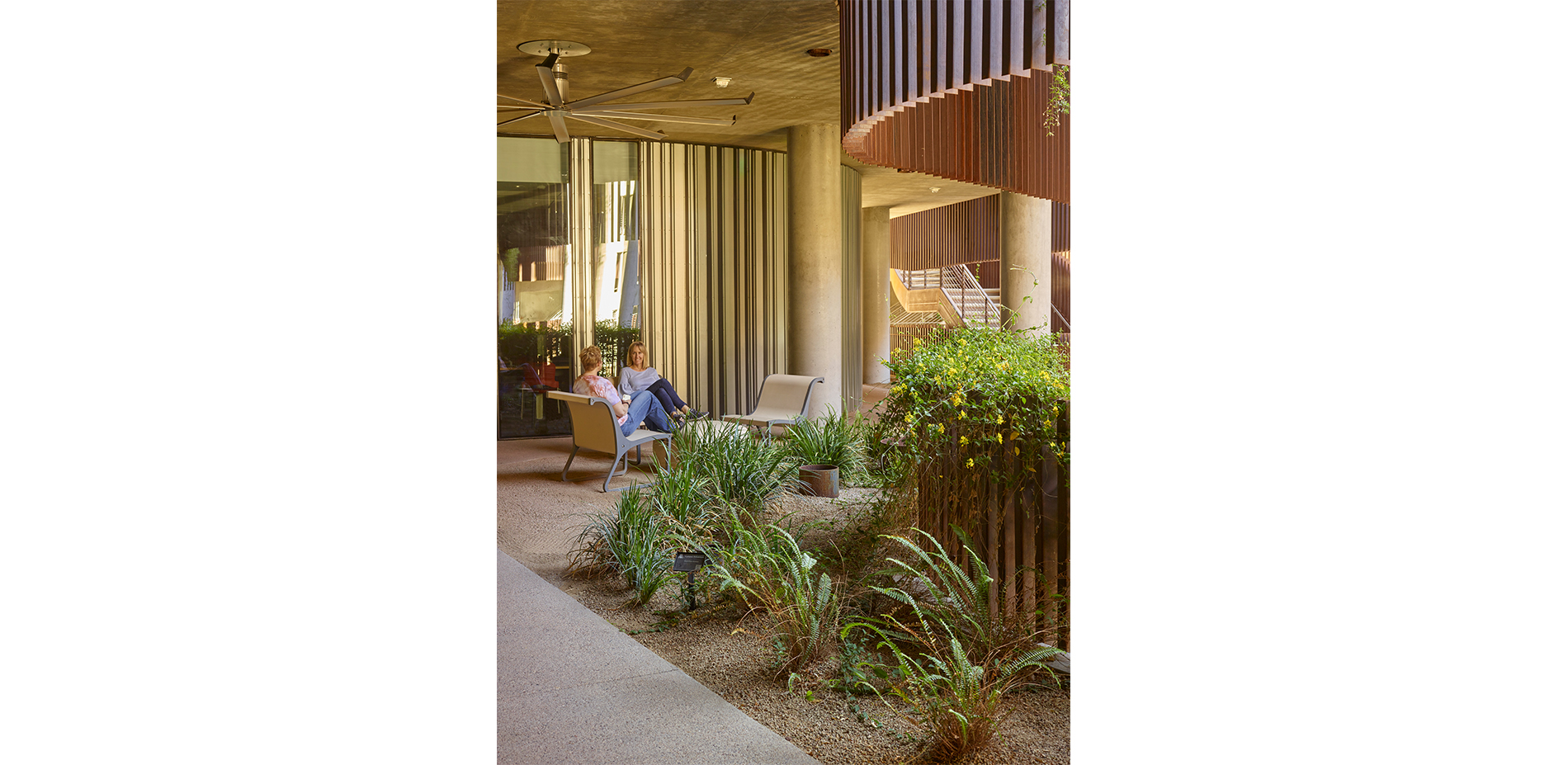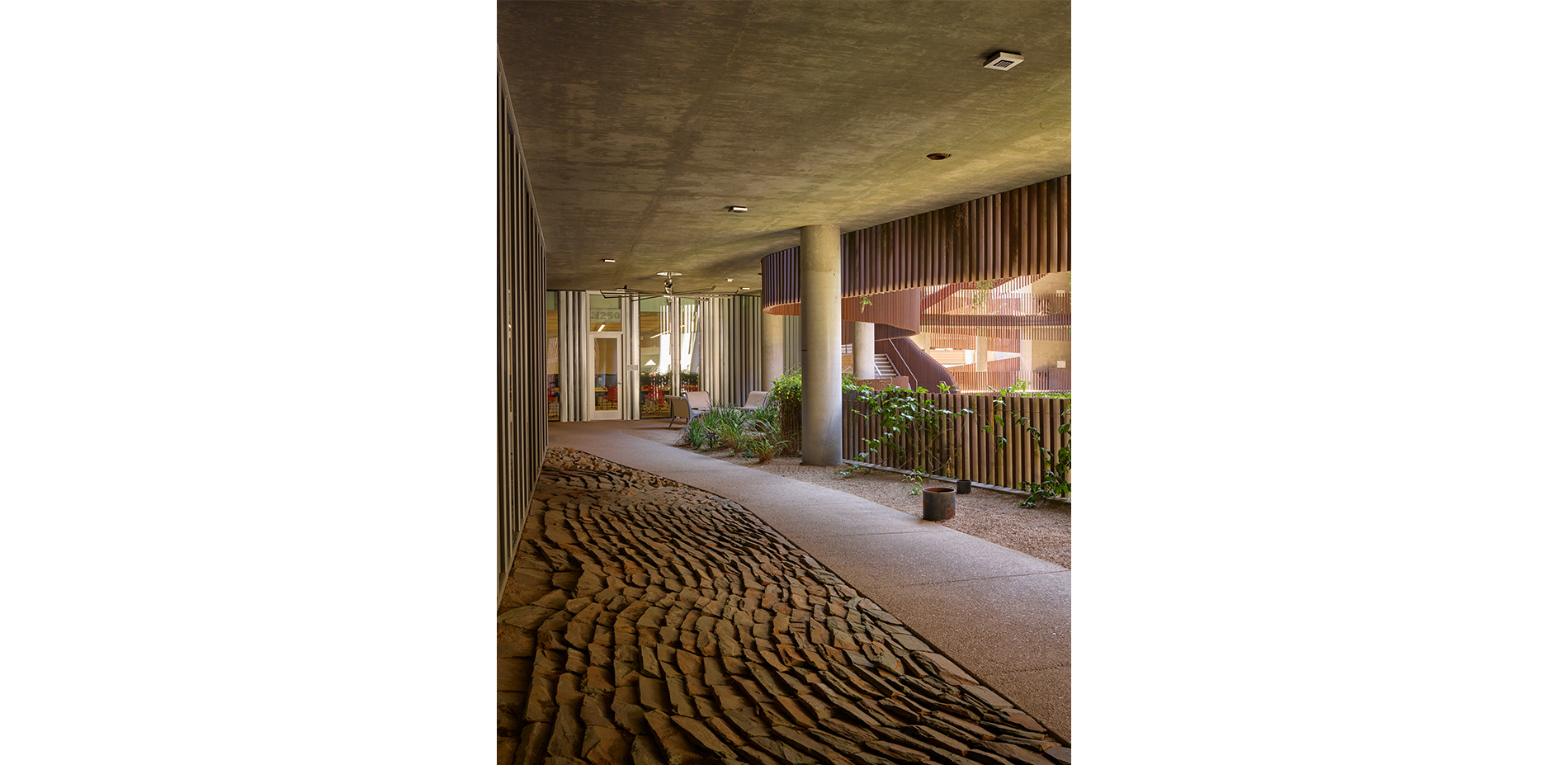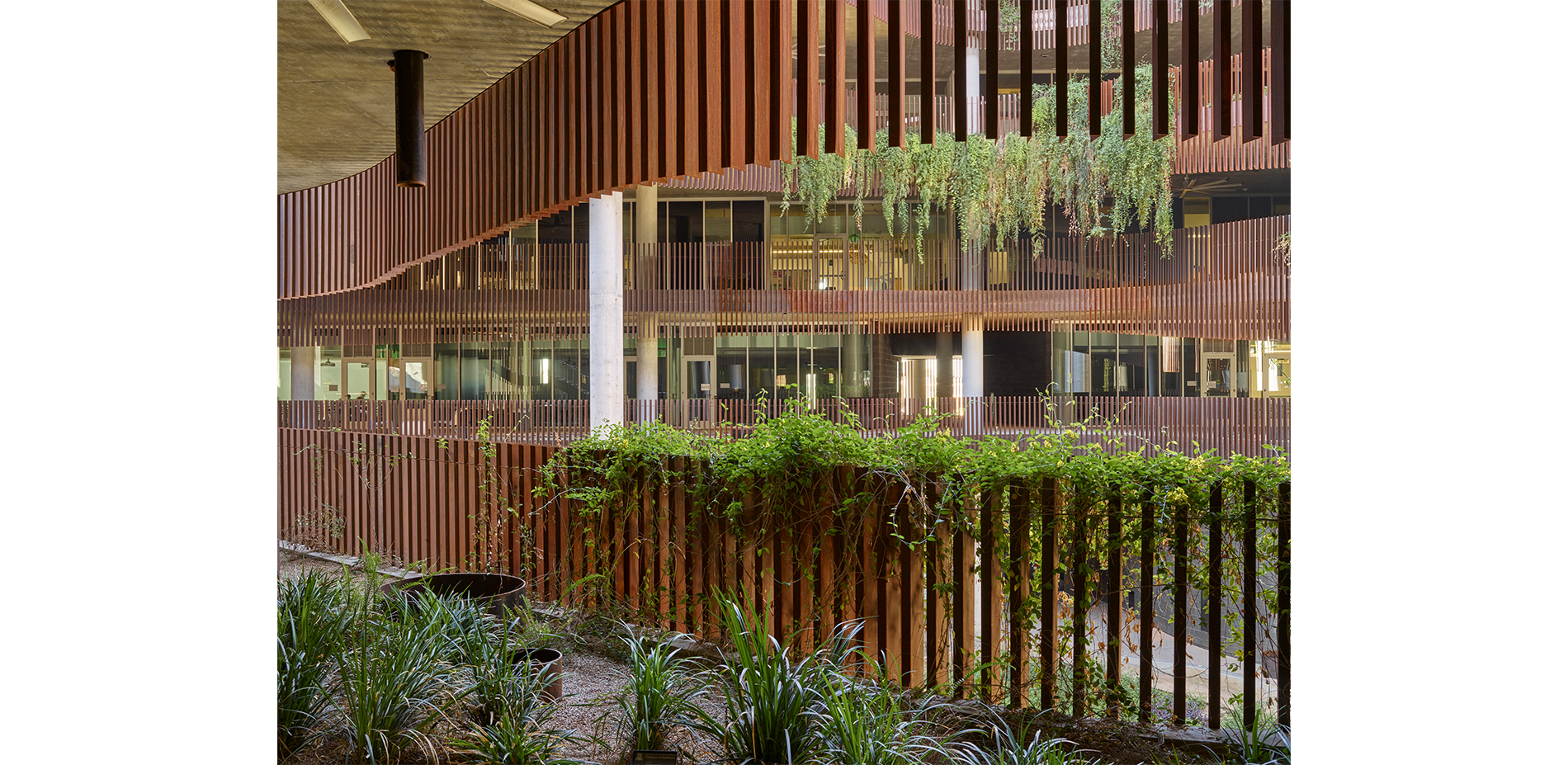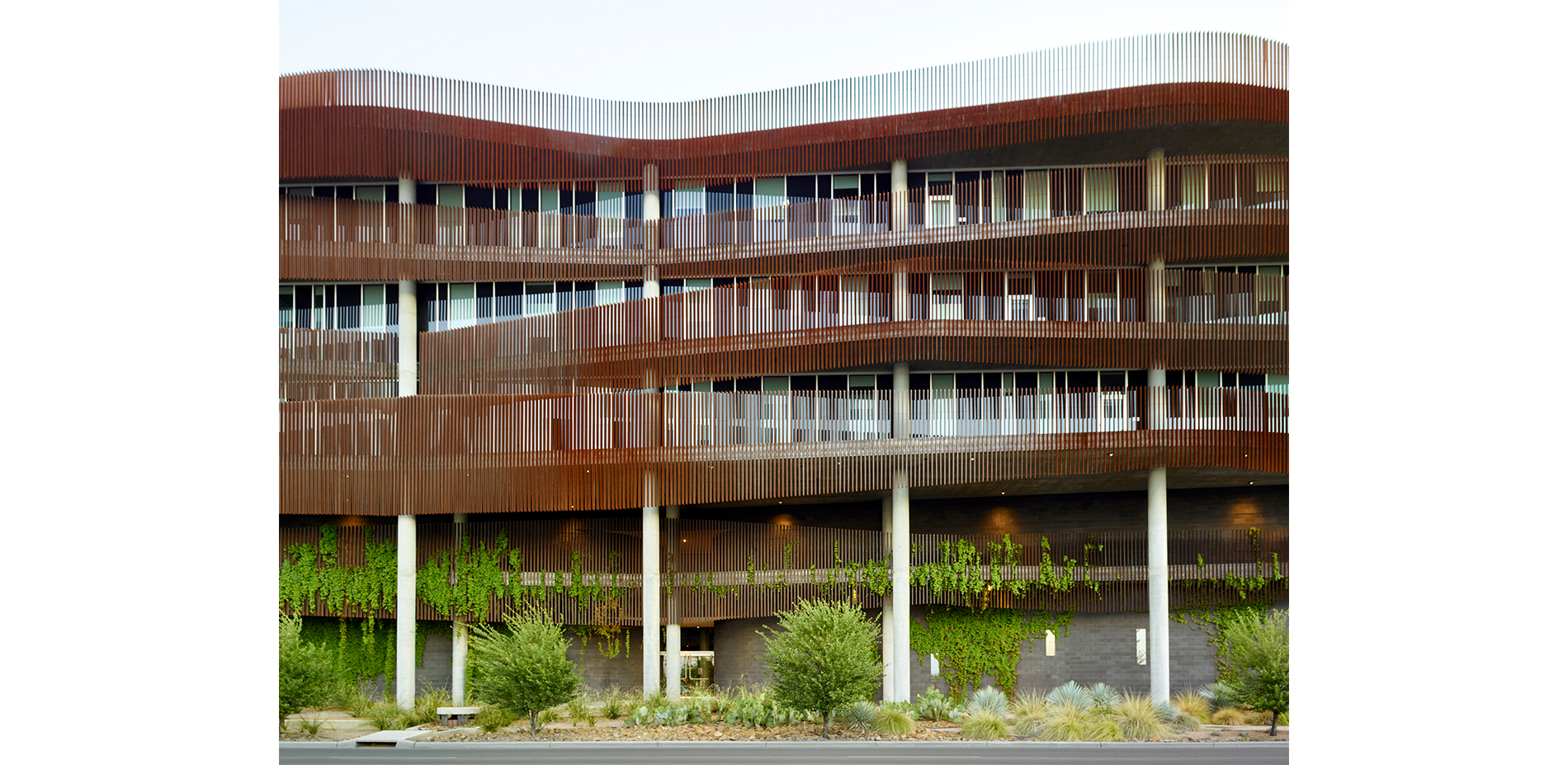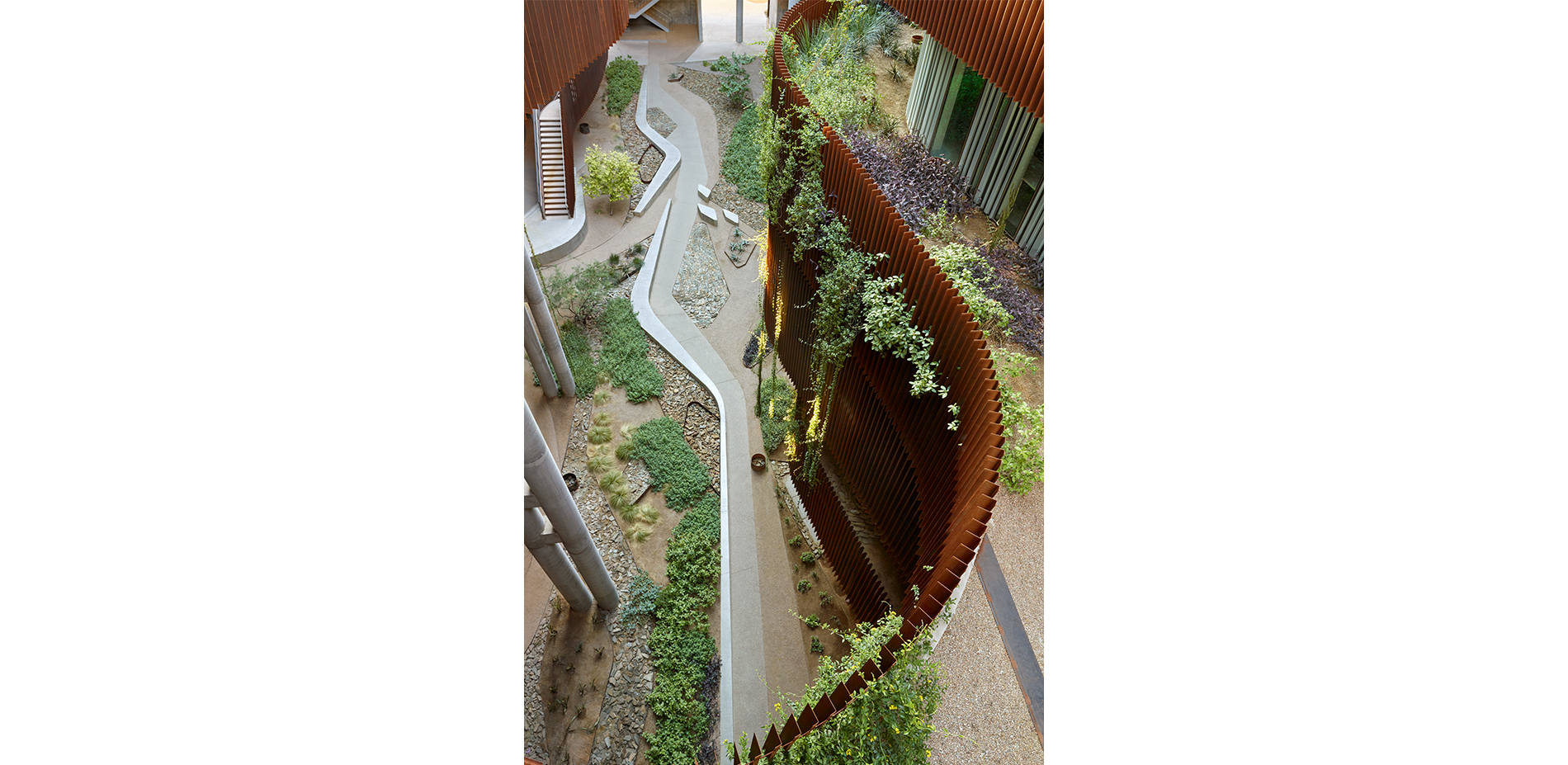University of Arizona Environment + Natural Resource II
Honor Award
General Design
Tucson, Arizona, United States
COLWELL SHELOR LANDSCAPE ARCHITECTURE
Client: University of Arizona
Nothing was taken for granted in this project; it is very detailed, and the systems seem to coordinate into a single, dynamic expression. Superbly detailed, thoughtfully designed, and highly sensitive to sustainable goals. It reflects a belief system that is difficult to create, but there is a collective place about sustainable design that we enjoy.
- 2023 Awards Jury
Project Credits
Michele Shelor, Co-designer
Allison Colwell, Co-designer
Erica Mackenzie, Design Team
Allyssa Williams, Design Team
Laura Wehler, Design Team
McGann & Associates, Landscape Architect of Record
Richard + Bauer, Design Architect
GLHN, Architect of Record, Civil Engineer, Mechanical Engineer
Hensel Phelps, General Contractor
Santa Rita Landscaping, Landscape Contractor
University of Arizona, Mark Novak, Campus Landscape Architect
Scott Martinez, ASLA, Don McGann, Beth Darnell, Landscape Architects of Record
Project Statement
The LEED Platinum University of Arizona Environment + Natural Resources II is a living laboratory and a centerpiece of environmental research. The project’s architectural and landscape architectural design borrows from the iconic imagery of Arizona - striking landforms of canyons and mesas, the dramatic play of light, shadow and adapted flora. The high-performance landscape demonstrates both active and passive sustainable strategies for climate mitigation and resiliency, urban wildlife and pollinator habitat, air and water cleansing, water harvesting, dynamic social space for all students and respite areas to promote mental well-being. The LAF Case Study Investigation 2023 is comprised of five stories of gardens using zero potable water.
Project Narrative
The hardscape and landscape concept is representative of an Arizona slot canyon carved by the flow of water, leaving sandbars rich in plant life and large deposits of tumbled rocks. Lower levels with less light are balanced with plantings and layers of textured rock, yielding to more and more vegetation as the levels widen and open to sunlight. Pathways weave in out of the building, defining social and collaborative spaces, planting beds and classroom entrances. A “tinaja” water catchment basin at the lowest point of the courtyard is filled with patterned rock, directing surface run-off to harvesting tanks. Smaller “eddies” spin off from the main walk to create social space for students to gather while larger gathering areas are located off the café and classrooms.
Climate change and heat island effects from rapid urban campus development are starkly apparent in Tucson, with increasing temperatures and less precipitation becoming the norm. Because our climate is so extreme, resilient spaces serving multiple purposes equitably serve students who need it most. Each floor is evaporatively cooled throughout the summer months through evapotranspiration and the thread of water dripping from one level to another. The difference in temperature can be 15-20 degrees cooler than an adjacent space. A five-story water harvesting system irrigates the landscape with reclaimed water from the site and adjacent buildings. Underground storage tanks capture 260,000 g. of condensate and runoff per year. All unused water flows from floor to floor through steel funnels, making its way to storage. Native and climate-adapted plants are integrated into planters and building walls to promote wildlife habitat, pollination and cleanse water as it moves through the site. The plantings are arranged to optimize biomass and minimize maintenance. The plants create a vertical ecosystem, with ferns and mosses located in deep shade, native sun-loving plants on higher levels, and vines cascading down from each terrace into the full height open courtyard. The vertical gardens attract urban wildlife habitat such as birds, bats, butterflies and insects creating a pollinator wonderland and ecosystem.
A two-year study was performed by the landscape architects to test the vegetation’s adaptability to different soil types, soil depth, and light conditions. Seven 4’ x 16’ test plots were constructed with varying degrees of shade cloth coverage, simulating the shade/light conditions of the building. These plots were monitored weekly by the landscape architect and UA’s Landscape Architecture students.
University of Arizona is a diverse campus, with over 50% of the student population being non-white and growing rapidly. Increased density is reducing accessible open spaces on campus. The cooler microclimate created by the vertical gardens and interior canyon courtyard has increased the opportunities for outdoor gathering and learning in this desert climate for all students. The gardens offer rare opportunities for students to be involved with research, engaged with practitioners and faculty in understanding how the real-world solves complex problems. Areas to support mental restoration are located near the rain garden - a serene environment that mitigates distractions of pedestrian traffic on the main walkways. The project is an important case study for sustainable design that reflects its desert environment, while providing a home for UA researchers and students.
Products
-
Irrigation
- Calsense
- Wilkins
- Rain Bird
- Watts
-
Green Roofs/Living Walls
- Hydrotech
Plant List
- AGAVE PALMERI PALMER'S AGAVE
- DASYLIRION WHEELERI DESERT SPOON
- EQUISETUM HYEMALE HORSETAIL REED
- ADIANTUM CAPILLUS VENERIS MAIDEN HAIR FERN
- ANEMOPSIS CALIFORNICA YERBA MANSA
- CALLIANDRA ERIOPHYLLA PINK FAIRY DUSTER
- DATURA WRIGHTII SACRED DATURA
- JUSTICIA CALIFORNICA CHUPAROSA
- LARREA TRIDENTATA CREOSOTE BUSH
- LOBELIA CARDINALIS CARDINAL FLOWER
- MUHLENBERGIA RIGENS DEER GRASS
- PASSIFLORA MEXICANA MEXICAN PASSIONFLOWER
- PLUMBAGO SCANDENS SUMMER SNOW
- SANSEVIERIA CYLINDRICA SNAKE PLANT
- SANSEVIERIA TRIFASCIATA MOTHER IN LAW'S TONGUE
- WOODWARDIA FIMBRIATA GIANT CHAIN FERN
- MASCAGNIA MACROPTERA YELLOW ORCHID VINE
- PARTHENOCISSUS SP. 'HACIENDA CREEPER'
- NOLINA MICROCARPA BEAR GRASS
- CERCIS CANADENSIS VAR. MEXICAN MEXICAN REDBUD
- OPUNTIA ENGELMANNII - ENGELMAN'S PRICKLY PEAR
